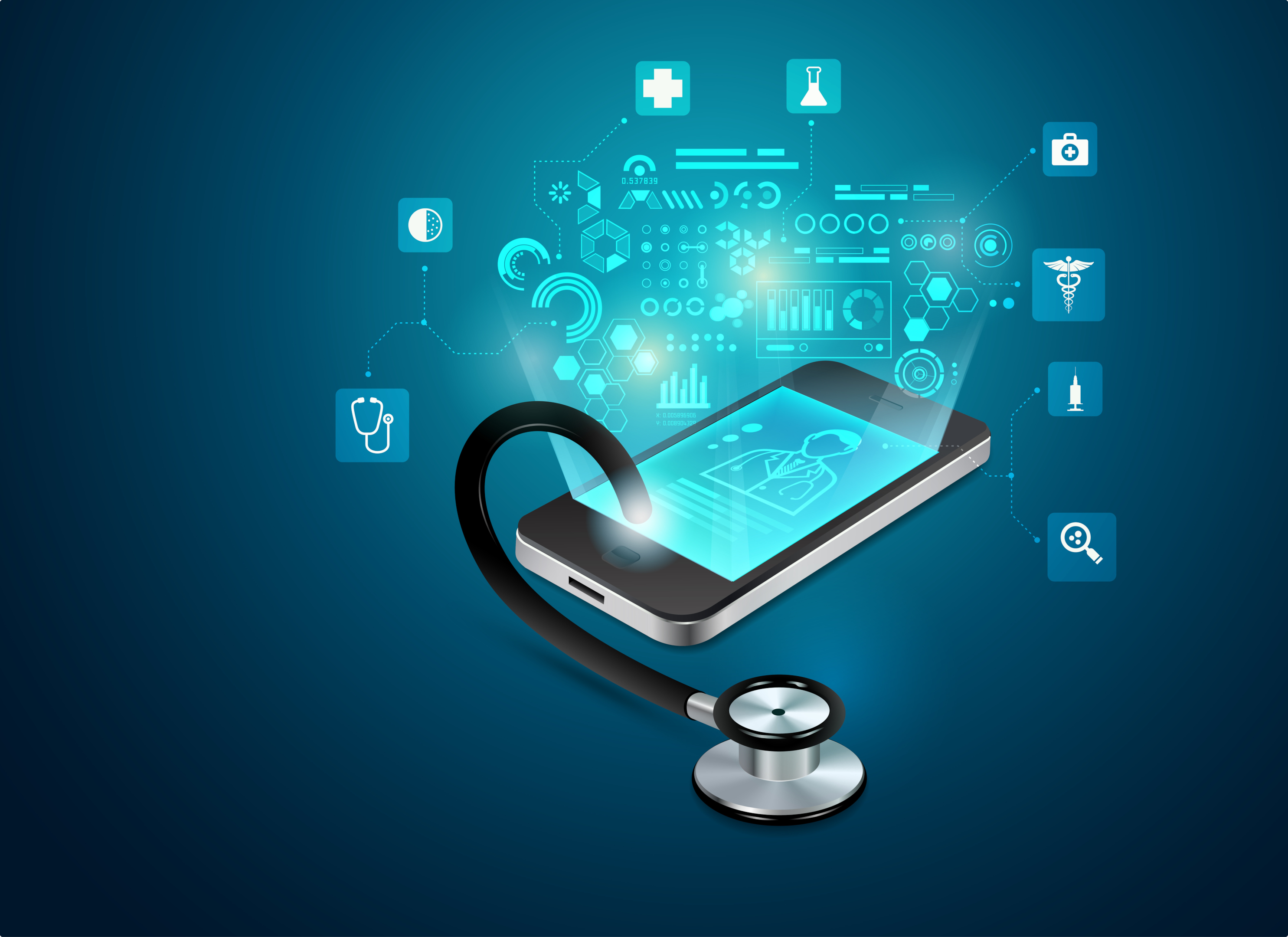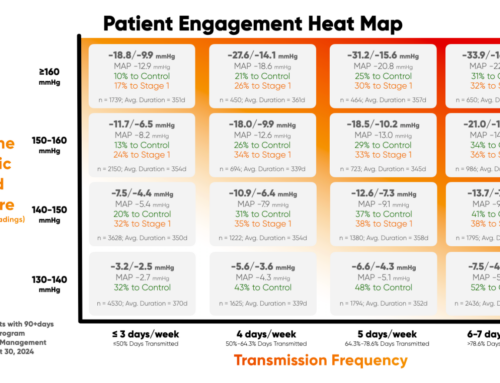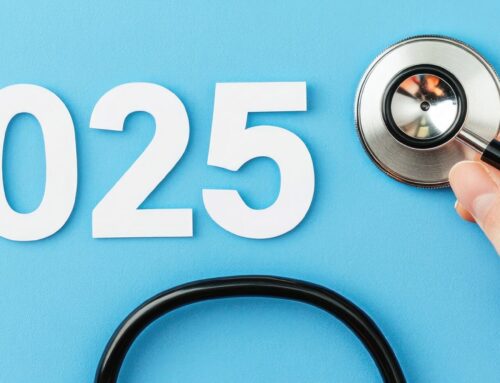Remote Therapeutic Monitoring (RTM) enables virtual monitoring of specific health conditions related to the respiratory system and the musculoskeletal system as well as adherence to the therapy (medications) and patient response to the therapy. The goal of Remote Therapeutic Monitoring is more effective patient management using digital medical devices that collect and transmit non-physiological data to the healthcare provider.
What are Remote Therapeutic Monitoring (RTM) CPT Codes?
The Center for Medical and Medicaid Services (CMS) has introduced five new Remote Therapeutic Monitoring (RTM) CPT codes. These RTM codes relate to various therapeutic care services for the benefit of patients as well as physical therapists.
The RTM CPT codes will benefit patients with medical conditions, such as osteoarthritis, rheumatoid arthritis, tendonitis, and bone fracture. In addition, patients with respiratory illnesses often require timely or urgent care (this has become more crucial in the backdrop of Covid-19 related lung infections and respiratory complications.)
In many cases, the patient’s condition may make it hard for them to travel or they may be living at a distant location. Remote Therapeutic Monitoring supports these patients by enabling home-based services with access to qualified physical therapists for better therapy adherence.
The RTM CPT codes now allow physical therapists to bill for remote services, which they could not do earlier, paving the way for additional revenue streams. The codes also create an opportunity for physical therapists to connect with more hospitals and surgeons and participate more effectively in bringing digital care to patients experiencing respiratory or musculoskeletal problems.
CMS has set the rates for each CPT code to enable reimbursement for therapists. The CMS has launched this initiative recognizing the need for online-based physical therapy services that will benefit the entire healthcare ecosystem. It will encourage more patients to utilize digital technology to achieve more effective health outcomes and increase the ratio of patients seeking physical therapy.
Description of Remote Therapeutic Monitoring Codes and Coverage
CPT Code 98975
Remote Therapeutic Monitoring (to monitor musculoskeletal system status, monitor respiratory system status, therapy or medication adherence, and therapy or medication response; initial equipment set-up and patient education on how to use the device. Billing for code 98975 is allowed only once for each episode of care (a care episode begins when the RTM service is activated and ends when the targeted treatment is completed).
CPT Code 98976
Remote Therapeutic Monitoring (to monitor musculoskeletal system status, respiratory system status, therapy or medication adherence, and therapy or medication response; supply of the medical device(s) with scheduled recordings (example: daily schedule) and/or transmission of programmed alerts to monitor the patient’s respiratory condition, every 30 days.
CPT Code 98977
Remote Therapeutic Monitoring (to monitor musculoskeletal system status, respiratory system status, therapy or medication adherence, and therapy or medication response; supply of the medical device(s) with scheduled recordings (example: daily schedule) and/or transmission of programmed alerts to monitor the patient’s musculoskeletal condition, every 30 days.
CPT Code 98980
Remote Therapeutic Monitoring (RTM) treatment and management services, physician or another qualified medical professional time in a calendar month with a requirement of a minimum of one interactive communication with the patient or their caregiver during the month (first 20 minutes).
In other words, at least 20 minutes of time in each month must be dedicated to the patient’s RTM care, and during the month, this 20-minute period should also include one or more interactive communications (for example: through phone or video calls) with the patient or their caregiver.
CPT Code 98981
Remote Therapeutic Monitoring (RTM) treatment and management services, physician or another qualified medical professional time in a calendar month with a requirement of a minimum of one interactive communication with the patient or their caregiver during the month; each additional 20 minutes (to be listed separately in addition to the CPT code for the primary procedure)
Out of the above-listed five codes, CPT 98976, CPT 98977, and CPT 98978 are practice expense-only codes, while CPT 98980 and CPT 98981 are considered professional work codes. With codes 98980/98981, the CMS can access the time range, which is the total time a therapist or another medical provider spends on monitoring, assessing, or managing the patient’s health condition. These two codes help maintain a track record of the provider’s work history.
Codes 98975/98977 are utilized for other purposes. With the help of these codes, CMS can track the supply of medical monitoring devices to the appropriate patients and those seeking these remote services. In addition, these RTM codes also provide the necessary instructions on how to operate these digital devices correctly and make their optimal use to support their health.
Other Important RTM Code Takeaways
Remote Therapeutic Monitoring is aimed at patient management via digital medical devices or equipment that collects non-physiological data. According to the new RTM CPT codes, information related to indicators, such as adherence to therapy or medication, response to therapy or medication, and pain levels can be obtained and billed for.
CMS recognizes that “therapeutic data” (and not just “physiologic” data) is an important aspect of patient information that can be remotely examined and monitored under these codes.
CPT Code 98976 is solely related to respiratory system status monitoring, while code 98977 is solely related to musculoskeletal system status monitoring. Under the present RTM equipment supply codes, other medical systems, such as digestive, endocrine, vascular, or neurological are not covered.
Physicians and other qualified medical providers can bill Remote Therapeutic Monitoring as general medicine services. Physical therapists, occupational therapists, speech-language pathologists (SLPs), physician assistants, nurse practitioners, and medico-social workers could be eligible for billing under RTM codes. The final rule says that physiatrists, physical therapists, and nurse practitioners are the primary billers of RTM CPT codes.
For RTM codes to apply, the use of a medical device is required as defined under the Food, Drug, and Cosmetics Act of the federal government. (In other words, it should not merely be a wellness device.)
The patient can self-report the RTM data, or the data may be digitally uploaded and transmitted through the device. Although RTM codes specify that the medical device used should be in accordance with the FDA’s definition of a medical device or equipment, the CMS has specified that RTM data reported or transmitted using an online platform or a smartphone application classified as “Software as a Medical Device” (SaMD) could also qualify for billing.
Key Differences between RTM and RPM CPT Codes
Although the CPT codes for Remote Therapeutic Monitoring have some similarities to Remote Patient Monitoring (RPM), there are three key differences as follows.
Who can Bill for Services
According to the CMS, Remote Patient Monitoring (RPM) codes are E&M codes and are mostly billable by physicians. On the other hand, Remote Therapeutic Monitoring (RTM) codes are considered general medicine codes, which may be used by physiatrists, physical therapists, and nurses, among some other healthcare professionals.
Patient Data Transmission
Remote Patient Monitoring requires that patient data should be digitally uploaded. RPM devices are designed to automatically collect and transmit patient data to the healthcare team in near real-time. But this is not the case with Remote Therapeutic Monitoring. While data collection for RTM also requires the use of a digital device, patients have the option to upload the data manually.
Nature and Scope of Patient Data
Remote Patient Monitoring services are aimed at gathering physiological data related to a patient’s chronic medical condition. But the nature and scope of data collected through Remote Therapeutic Monitoring are different. RTM codes are limited only to the respiratory system and musculoskeletal system at present, and the data collected is non-physiological in nature. The focus in RTM is on therapy or medication, patient adherence, and patient response to the therapy.
A strong example of how Remote Therapeutic Monitoring may benefit patient management would be to monitor the health condition of a patient diagnosed with chronic obstructive pulmonary disease (COPD). RTM devices can record the frequency of the patient’s compliance with using a respiratory inhaler and any other prescribed medication or therapy.
Over time, the therapy team may be able to correlate environmental triggers with the change in the patient’s condition and adjust the treatment in order to improve therapeutic efficacy. The therapists may also be able to determine correlations between the prescribed medications and patient response in order to make the necessary adjustments in therapeutics or dosage.
Impact of the Final 2023 Medicare Physician Fee Schedule on RTM
CMS has published the Final 2023 MPFS (Medicare Physician Fee Schedule for 2023). This is the regulation governing coverage and payment policies for the services of medical professionals, including Remote Therapeutic Monitoring (RTM) service reimbursements.
In July 2022, the Proposed 2023 MPFS was released, which covered changes to the payment policy for Remote Therapeutic Monitoring services with the goal to address the concerns within the existing CPT codes. The central concern was that the RTM CPT codes were placed in the CPT Manual’s Medicine section. This code set allowed practitioners, such as physical therapists as well as clinical psychologists to order and bill for RTM services independently (in addition to doctors, nurses, and physician assistants.)
CMS has determined that the placement of these CPT codes in the Medicine section instead of the E/M services section would mean that the RTM CPT codes cannot be considered as the codes for “designated care management services.” (These allow for the clinical staff time to be billed “incident to” a medical practitioner’s services under the head of “general supervision.”)
In other words, this placement meant that it is not necessary for the clinical staff to be physically present at the same location as the billing medical practitioner.
Changes from the Proposed 2023 MPFS Rule to the Final Rule for RTM
It has been observed that a medical practitioner’s ability to outsource the treatment, management, and monitoring element of a Remote Therapeutic Monitoring program to clinical staff outside their own medical practice is seen as vital to the program’s success.
The Proposed 2023 MPFS aimed to resolve the problem posed by the two RTM codes finalized in 2022 by making a replacement of the codes 98980/98981 with 4 new HCPS codes. Out of these, two codes would be used as designated care management services by physicians, nurses, and physician assistants, and two would be used by Qualified Health Care Practitioners, including physical therapists, clinical psychologists, and occupational therapists.
Moreover, as part of the Final 2023 MPFS, CMS chose not to finalize the 4 new HCPS codes. In their place, the CMS decided to direct its changes on the supervision levels needed for the involvement of clinical staff in the RTM program. The CMS stated: “General Supervision for all RTM services – any Remote Therapeutic Monitoring service may be rendered under our general supervision requirements.”
RTM 16-Day Requirement May Not Be In The Cards
CMS also suggested in the Proposed 2023 MPFS that data transmissions of 16 days would be necessary in order to bill for Remote Therapeutic Monitoring codes. However, this led to concerns from stakeholders who find value in providing RTM services with less than 16 days of data transmission. CMS has signaled in the Final 2023 PMFS that continued modifications to the RTM codes are expected, indicating the upcoming consideration of the CPT Committee about removing the 16-day data transmission requirement for the new CPT codes.
No Generic Device Supply Code
In 2022, the CMS finalized two separate system-specific RTM device codes. These include code 98977 for the supply of a medical device to monitor the patient’s musculoskeletal system and code 98976 for the supply of a medical device to monitor the patient’s respiratory system.
Analysts have requested CMS in 2023 Proposed MPFS to provide a generic medical device supply code that would be system/condition agnostic, leading to wider use cases for Remote Therapeutic Monitoring services. As of now, CMS has refused to do so but it has noted that will stay engaged with the stakeholders regarding this issue.
Will Remote Therapeutic Monitoring Improve Physical Therapy Services?
The answer is a resounding yes! With the rapid advancements in digitization in virtually every industry, including healthcare, telehealth and telemedicine are the future. Particularly in the aftermath of the Covid-19 pandemic, the trend of virtual healthcare services has accelerated.
A large number of patients are now willing to accept and utilize RPM and RTM services because they no longer prefer visiting hospitals and clinics for periodic consultations, health check-ups, monitoring of physiologic and non-physiologic conditions, and physical therapy sessions. With RTM, the possibility of receiving virtual physical therapy services has increased.
Consider this scenario. A patient who suffered broken bones in a slip and fall accident receives treatment at the hospital and is ready for discharge. Post-discharge, in these cases, diligent aftercare and professional monitoring are essential to address any musculoskeletal problems. The medical providers can then utilize Remote Therapeutic Monitoring services and connect with the patient using an online platform.
This enables the medical team to monitor the patient’s routine activities, medication adherence, and therapy response, apart from identifying factors that may reduce or extend the recovery phase. As a result, patients can expect better health outcomes, while feeling reassured that their condition is under the constant monitoring of healthcare professionals.
HealthSnap is the Trusted Platform for Virtual Care Management and Monitoring
HealthSnap is a single, unifying operating system for the entire care team to deliver optimal care for better patient outcomes, regardless of where the patient is. Our state-of-the-art Virtual Care Management Platform is helping in the transition from episodic, reactive care to ongoing, proactive care that enables care in the comfort and security of a patient’s home.
Data transmissions in near real-time allowing for closer and more personalized engagement between the providers and patients while improving data-driven decision-making for disease management. If you are looking to bring together all your virtual chronic care delivery needs onto a single platform, HealthSnap is the right choice.
Have questions or need a product demo? Call us at 888-7801872 or click here to schedule a consultation.






